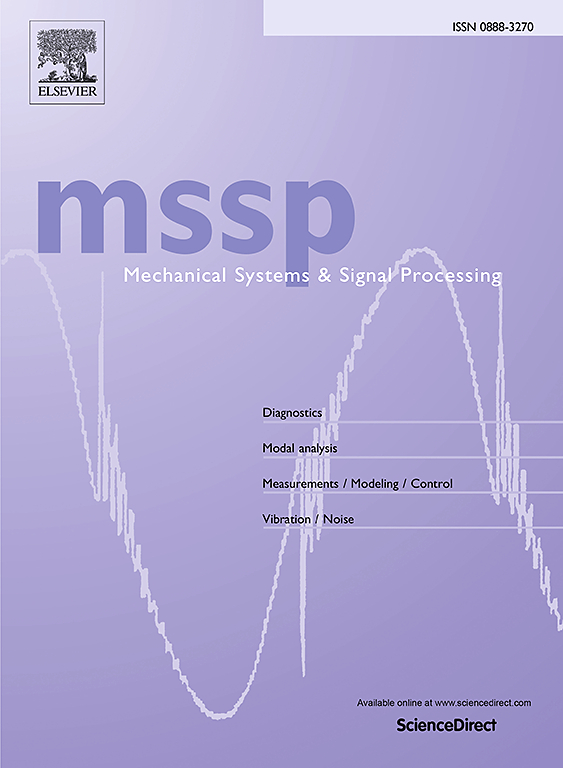A nonlinear transmissibility function-based diagnosis approach for multi-disks rub-impact faults in rotor systems with nonlinear supports
IF 7.9
1区 工程技术
Q1 ENGINEERING, MECHANICAL
引用次数: 0
Abstract
For diagnosing rub-impact faults in rotor systems, numerous advanced methods leveraging nonlinear vibration features such as Frequency Response Function (FRF), Output Frequency Response (OFR), and Transmissibility Function (TF) have been developed and implemented. Addressing limitations in existing methods, such as the need for reference data from healthy rotors, neglect of nonlinear supports, and focus on single-disk rub-impact faults, this paper introduces a novel systematic approach using nonlinear TF-based indexes. Initially, a comprehensive nonlinear rotor dynamic model is established, incorporating unbalance forces, rub-impact forces, and nonlinear support forces. The nonlinear TF is then defined through nonlinear output spectra. By exciting the rotor system four times with varying unbalance force magnitudes and focusing on a single-disk rotor sub-model, two fault features based on nonlinear TFs and rub-impact fault forces are identified. This innovative approach, featuring sensitive fault indexes and detailed operational procedures, is validated through extensive numerical studies and experimental comparisons on a lab rotor system with multi-disk rub-impact faults and nonlinear supports. The study presents a groundbreaking and effective method for detecting and localizing multi-disk rub-impact faults in rotor systems, even with nonlinear supports.
求助全文
约1分钟内获得全文
求助全文
来源期刊

Mechanical Systems and Signal Processing
工程技术-工程:机械
CiteScore
14.80
自引率
13.10%
发文量
1183
审稿时长
5.4 months
期刊介绍:
Journal Name: Mechanical Systems and Signal Processing (MSSP)
Interdisciplinary Focus:
Mechanical, Aerospace, and Civil Engineering
Purpose:Reporting scientific advancements of the highest quality
Arising from new techniques in sensing, instrumentation, signal processing, modelling, and control of dynamic systems
 求助内容:
求助内容: 应助结果提醒方式:
应助结果提醒方式:


